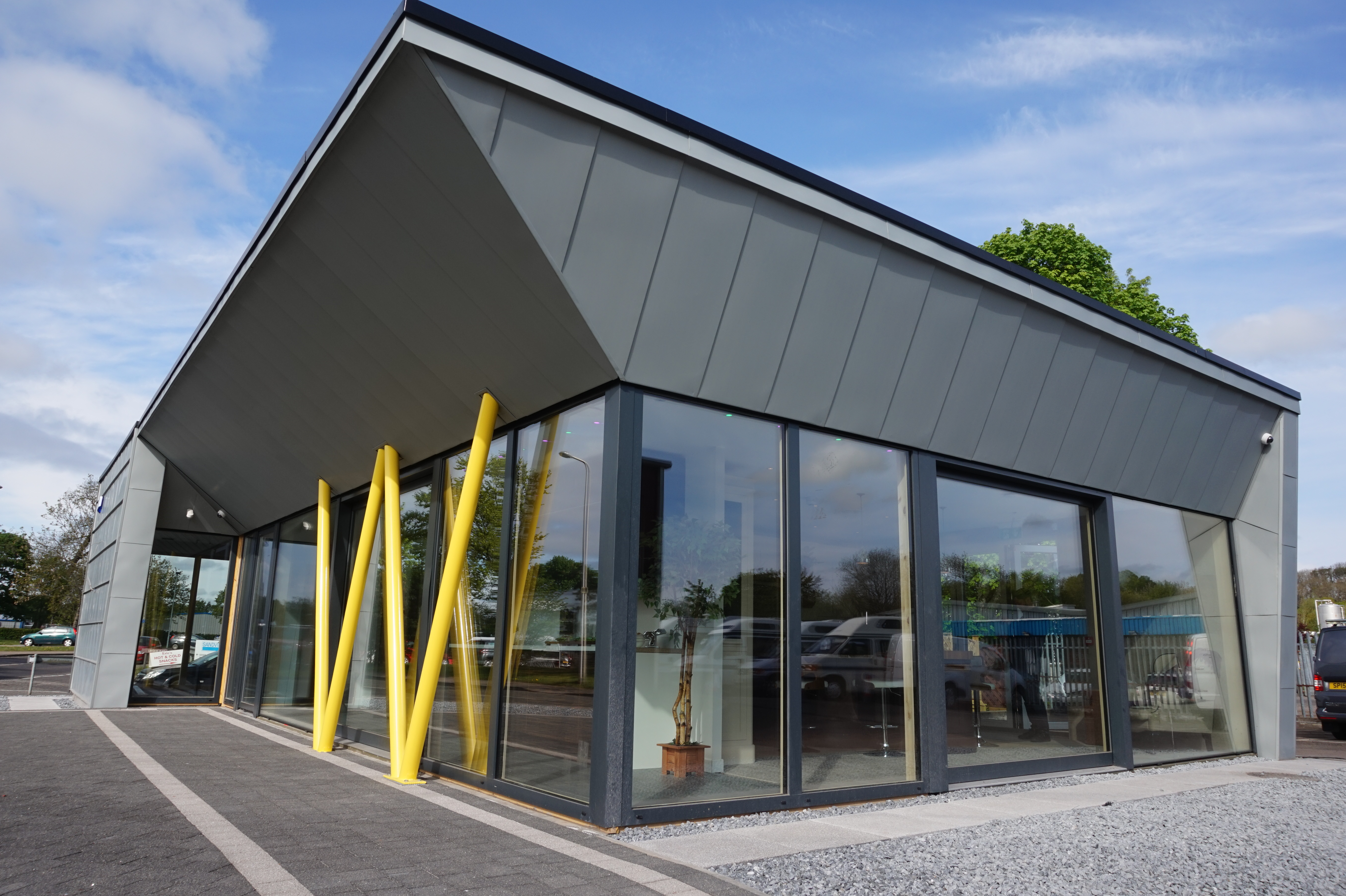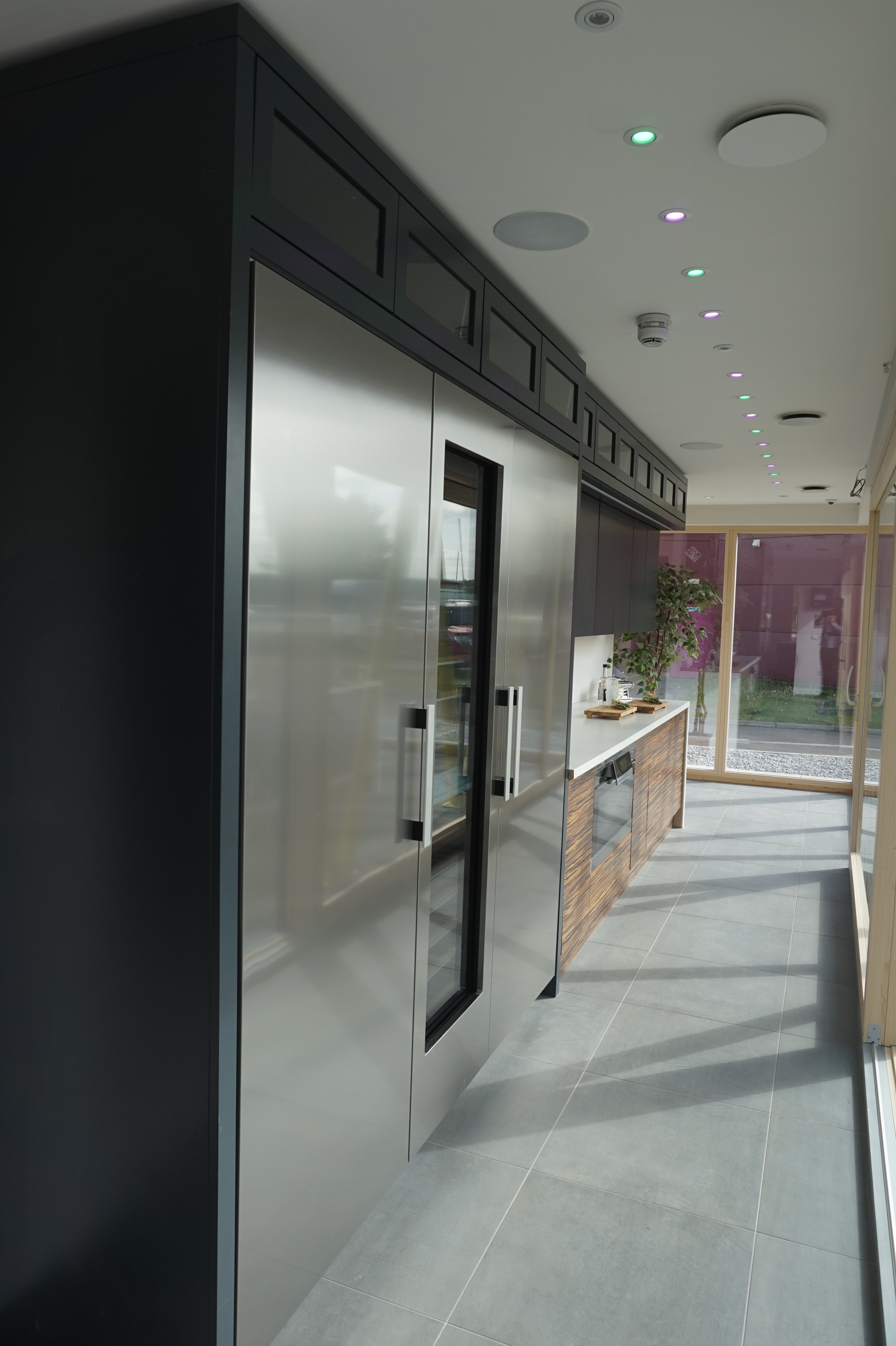Due to a surge in interest following one of our previous blogs on Loxone Home Automation systems, we spoke to Marc Heath and Jon Drummond, from Inspiro Smart Home Technology, for some more expert insight on all things Smart Home technology.
FIRST OF ALL, WHO ARE INSPIRO/D3 AND WHAT IS A SMART HOME?
INSPIRO Smart Home Technology is a residential company formed by commercial AV company D3 Audio Visual. D3 Audio Visual have completed some of the most significant corporate AV and automation installations in Britain.
We are now putting that knowledge and experience into the Smart Home residential market in Scotland. Having tested various smart home products over the years, we been hugely impressed with Austrian manufacturer Loxone, and have since become Loxone’s only Scottish Gold partner.
To INSPIRO, a Smart Home will use technology to better its performance in energy, provide management and monitoring of its systems (usually lighting, heating, security) and often integrate with entertainment systems.
WHAT ARE THE BENEFITS OF SMART HOME TECHNOLOGY FOR SELF BUILDERS?
There are many advantages of Smart Home technology, and the client’s priorities should drive the design. The integration of various systems means one central place to manage and control all or some of your lights, heating, security and entertainment systems.
If we can control each of these aspects then we can use the home in different modes, for example, a holiday mode which sets the heating to frost protection, turns on the house alarm and uses the lights after dark to simulate occupancy.
A Smart Home should also always improve its energy performance to some degree, this could be as simple as having lights switch off or dim if nobody is in a room.
A much cleverer example would be where we can integrate with PV invertors so that any energy gain that is not directly required to run the house could be directed to a hot water tank so no energy is wasted.
Music or TV distribution are also popular aspects to integrate. This brings the control of these systems to one app, but also allows us to use the speakers through the house to sound a door bell chime, or as a siren for the house alarm.

IS IT EXPENSIVE TO INTEGRATE SMART HOME TECHNOLOGY? WHAT SORT OF COSTS ARE INVOLVED?
As each design is bespoke to the customers’ requirements and budget, it is impossible to put an exact cost to a system until the specifications are known. The Loxone system grants us a degree of flexibility, in that we can pick and choose key aspects in priority areas of the house if the budget does become an issue.
As a very general rule though, it’s typical that for a more involved project, customers are spending around 5% of the building cost on Smart home technology.
That said, a house can simply be made Smarter and better future-proofed by fitting Wi-Fi points to improve coverage and speed, and installing Cat6 points to TV positions. This might only need to cost a few thousand pounds.
The most important aspect of a smart home is the infrastructure and cabling and provision for what you might need in the future. Consider what aspects are most important for you, i.e., lighting, heating, security, music, TV, monitoring, energy management.
Once you’ve got a few ideas about this then it’s time to find a company who you feel you can work well with. So much of what we do is to help the home builder understand what is possible and how to get the best value and experience from investing in this technology.
Out with the Loxone system, an important feature to consider is Wi-Fi distribution and a home network. The way in which we consume media is changing; with more and more people streaming both music and video content.
The amount of insulation used in new build homes is detrimental to a Wi-Fi signal, and this can affect the speed and the reliability when streaming content. We would recommend investing in proper Wi-Fi distribution as well as network points in key areas of the home for smart TV’s, games consoles and media players.

TELL US ABOUT THE SMART HOME TECHNOLOGY SHOWROOM
The smart home showroom is a collaboration between INSPIRO Smart Home Technology and another local business, Callum Walker Interiors. Callum Walker Interiors provide some wonderfully designed kitchens and bespoke joinery.
It’s a fantastic space to see all sorts of products – from high-performance glazing, bifold doors, kitchens, bathrooms, and of course, an extremely well equipped Smart Home space.
We have worked hard to demonstrate the everyday benefits of Smart Home technology, i.e., lighting automation, heating control, security aspects using a house alarm and CCTV and multiroom audio, amongst other things.
We’ve always believed at INSPIRO that uncomplicated, reliable and effective designs should be the focus, so we have purposely not wanted to display something that is gimmicky or has a ‘wow’ factor for only 5 minutes. Each aspect of the Loxone system in the showroom serves a purpose and integrates, to become a true smart system.
HAVE YOU WORKED WITH MANY SELF BUILDERS IN THE PAST?
The staple of our business comes from Self Builders, and this has grown steadily over the last couple of years. We’ve definitely experienced Self Builders being more and more aware of the possibilities, and also being more courageous to investigate Smart Home technology further.
I think this is a desire not only to build a home that works efficiently, but also comfortably. Manufacturers, like Loxone, have made these systems so much more affordable – so it is no longer just a product for the elite homes.

HOW DOES THE DESIGN PROCESS WORK, AND CAN THESE BE INSTALLED RETROSPECTIVELY?
Through the project, we work closely with the client – and often the architect depending on the arrangement. We’re very conscious that a Self Builder puts huge amounts of energy, time and emotion into the build, so we can’t underestimate the importance of getting the design right, and meeting the customers’ expectations.
That is another reason why the showroom works so well; a customer can really understand and experience how the Smart Home technology would relate to their own home.
We first have a meeting at the showroom and demonstrate the possibilities. Then it’s a matter of discussing the customers’ requirements, priorities and budget. We then work on an initial proposal, which should better inform the customer of function and costs.
This is then often adapted – either due to further input from the customer, or more information being provided on the building. Once we have agreed on the design and a deposit is paid, we put together the cable schedules and a schedule of works that would outline the installation and the requirements.
We primarily work with new builds, renovation projects or extensions. That said, there are more and more products available for retrofitting, and these can often complement existing systems or can be used to create effective smart homes of existing buildings.
1. If you are interested in smart home technology, do your research and visit the showroom. Get to fully understand what a smart home is. If this technology is going to be installed in your home, you need to experience it and learn what it is capable of doing.
2. Consider a budget early in the process – This is good for both parties, the client knows what they can afford and we can then put together a design to meet these expectations. It is also worth remembering that there can be potential cross over costs (in wiring and lighting) that may negate costs in other areas.
3. Have priorities – along with a budget, the Self Builder should consider priorities on what they want to achieve within the home. With this information the whole design process develops quickly and it give us a focus.
4. Consider futureproofing certain aspects of a smart home. If the budget does become a concern or you would like to invest the money in other areas, certain aspects of the system can be designed and wired for installation at a later date. A great example of this would be a music distribution system. Music distribution is a fantastic thing to enjoy around the home and the majority of our customers love the idea of playing music in key areas and the integration in to the alarm or door bell. However, everything comes at a cost. We can cable up to the speaker locations, even supply grills to give the impression there are speakers in the ceiling making it easier and cleaner to fit in the future.
5. Finally, find an installer who you trust and have confidence in!
We’d like to thank Jon and Marc for their great contribution to ACA’s blog. If you are interested in Smart Home Technology for your Self Build, why not visit Inspiro Smart Home Technology’s showroom?
The showroom is located in Perth and Inspiro Smart Home Technology would be happy to arrange a tour for Self Builders. To arrange an appointment, email jon@inspiro.house or call the office on 0330 223 0223.




